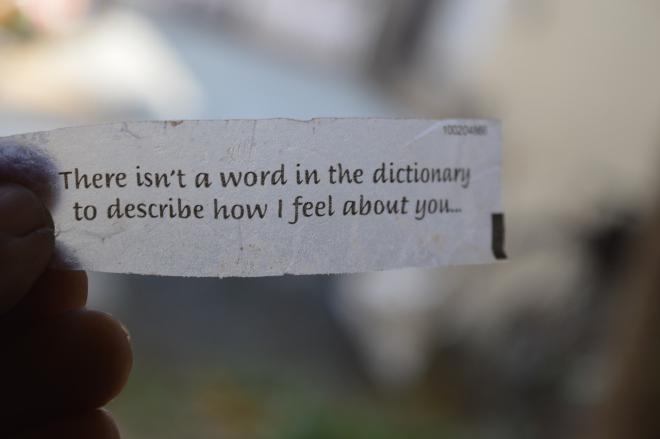When you are traversing the wilds of Poly Land, you’ll surely encounter many loving folks. However, not everyone you meet will show their love in the same way. That’s why it’s important to know the poly love languages (please see that link for the book by Gary Chapman)– not only your own but those of everyone you love. To make this even easier we’ve written another quiz!
And we’ve also written this field guide to help you spot them in the wilderness since stopping each passerby and asking “Excuse me, could you answer these questions at Poly.Land?” might be a little impractical. Although don’t let us stop you.
Remember when you’re trying to figure out which of the poly love languages a person uses the most: It goes both ways. This is the language you speak and the language you understand best. You show your love for other people in that way and you FEEL loved when people do it to you.
The Five Poly Love Languages #
Words of Affirmation #

This involves saying loving things, giving compliments, praising a partner for accomplishments or attributes. “I love you, I’m proud of you, you are an incredible person,” etc.
Pros: Of the five poly love languages, words of affirmation is arguably one of the easiest to satisfy when involved in a long distance relationship. A sweet text or email is easily sent from practically anywhere in the world. My ex-girlfriend managed to send me beautiful messages when she was volunteering in Haiti.
Cons: Sweet-talkers have a way of winning your affections, even if they’re not necessarily trustworthy. And distracted by silver tongued contenders, you may overlook people who are truly compatible with you but aren’t eloquent.
Challenges: Looking behind the words at a partner’s actions. Feeling appreciated when your partner isn’t a wordsmith.
Suggested Readings:
- What They Don’t Tell You About Dating an Abused Person, Part 2
- Daily Odd Compliment (tumblr)
- 100 Compliments Ready to Deliver Right This Minute
- The Compliment Quotient
Quality Time #

This is spending time together. It can be just being physically present in the same room, but it’s even better if you’re actually doing stuff and interacting. Going on a date, for a walk, to the movies.
Pros: This can be fairly convenient, depending. If you live with someone and your schedules line up well, you will undoubtedly spend a lot of quality time together eating meals, Netflix and chilling, what have you.
Cons: Time is not infinite. Poly people in particular are way more strapped for time, especially if your style of poly is parallel poly where your lovers never cross each other’s paths and you do not socially hang out as a group. Partners who don’t live with you and have this style can become resentful of partners who do live with you as they have unequal access to time.
Challenges: Making sure that partners with this love language get enough time and making the most of whatever time is available.
Suggested Readings:
- PQ 1.6 – How Do I Define Commitment?
- How Polyamorous People Use Google Calendar to Schedule Their Love Lives — The Daily Dot
- The 7 Habits of Highly Effective People (particularly re: time management, “Put First Things First”)
- 101 Cheap Date Ideas
Gifts #

Gifts is the most self-explanatory of the poly love languages. Gift-giving and not just on birthdays or holidays. They don’t have to be expensive gifts, but they should be thoughtful.
Pros: This is another one of the poly love-languages that can be easily done in a long-distance relationship, provided you can ship packages to them. It also doesn’t take a lot of time to give someone a present, and time is always at a premium in polyamory.
Cons: Even if they are relatively inexpensive presents, gift-giving can get expensive if you do it enough — especially if you have several lovers that you are giving things to. If one partner is easier to buy for than another and this is left unaddressed, this can cause resentment.
You may also find yourself in situations where Hallmark doesn’t quite cut it, although this can actually be funny. I saw a card at the grocery that said “I love sharing my life with you.” The way it was cut off by the display holder, I thought it said “I love sharing you,” and for a second, I thought they were stocking cuck/poly greeting cards.
Challenges: Keeping track of each partner’s gift preferences. Not spending too much money.
Suggested Readings:
- Gift Giving for Busy People
- Budgeting for Dates, Polyamory on Purpose
- Poly Finances, Poly Families
Acts of Service #

Being helpful to the person you love. This could include cooking, doing chores for them, fixing things (car, computer, appliances), cutting their hair, etc.
Pros: Depending on your skill set and how often you see the partner in question, this can be a very low-cost and convenient way of expressing your love.
Cons: It can be frustrating when you don’t have the skill in question. If your partner is stressed out from a broken down car, you can’t express your love by fixing it if you don’t know anything about cars.
Cooking in particular can be a landmine since food preferences and requirements are so individual. Cleaning is similar. I’ve discovered that there are at least three “correct” ways to fold bath towels. And don’t get me started on ways to load a dishwasher.
Challenges: Finding ways to be helpful when nothing is broken or needs doing. Making sure to have fun and ensure your relationship isn’t limited to playing Mx. Fix-It.
Suggested Readings:
- 101 Acts of Service, an Exercise in Frugality
- Polyamory and Chores, Poly Families
- Laundry Time
Physical Touch #

This includes all physical contact from a nonsexual hug or massage all the way up to red hot fun sexytimes.
Pros: It’s free, it’s easy. It feels really good.
Cons: If PDA isn’t your thing, you’ll need to find private time alone to indulge. This is also the hardest of the poly love languages to address in a long-distance relationship.
Some forms of physical contact carry risk of sexual transmitted infection and/or pregnancy.
Asexual poly folks may crave physical touch but not desire sex. This preference can be difficult to communicate and lead to their partners feeling rejected.
Challenges: Feeling loved when lovers aren’t physically present or aren’t up to cuddling, kissing, or sex (injured, ill, wrong head space, etc). Practicing safer sex.
Suggested Readings:
- Yes
- “But What if They Test Positive?”
- The Kama Sutra
- The Big, Fat Polyamorous Asexual Post, The Thinking Aro
*
While people occasionally show love from the entire spectrum of love languages, they tend to have a primary love language they use the most and then a secondary that they use less often but still more frequently than the other three. Keep an eye out for it.

